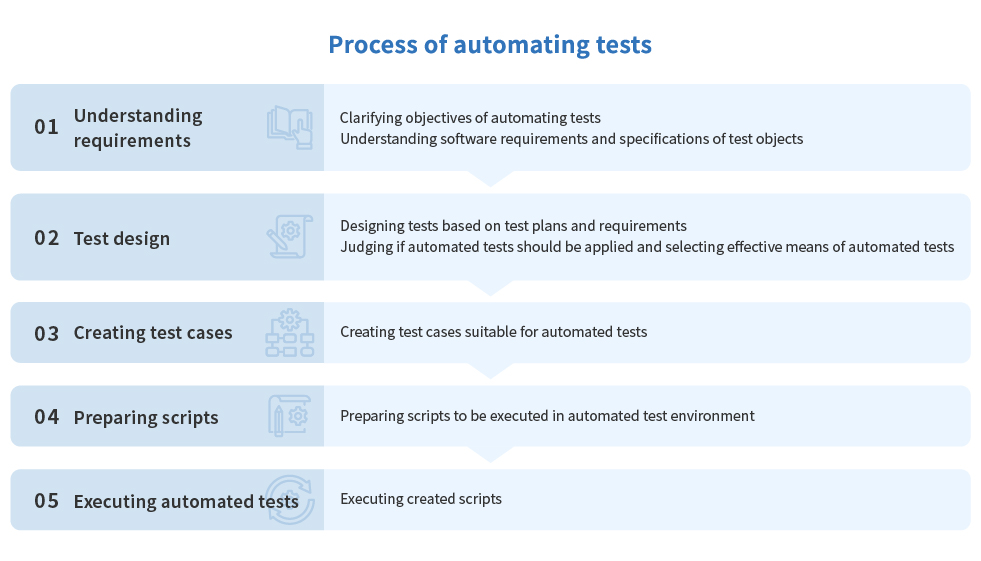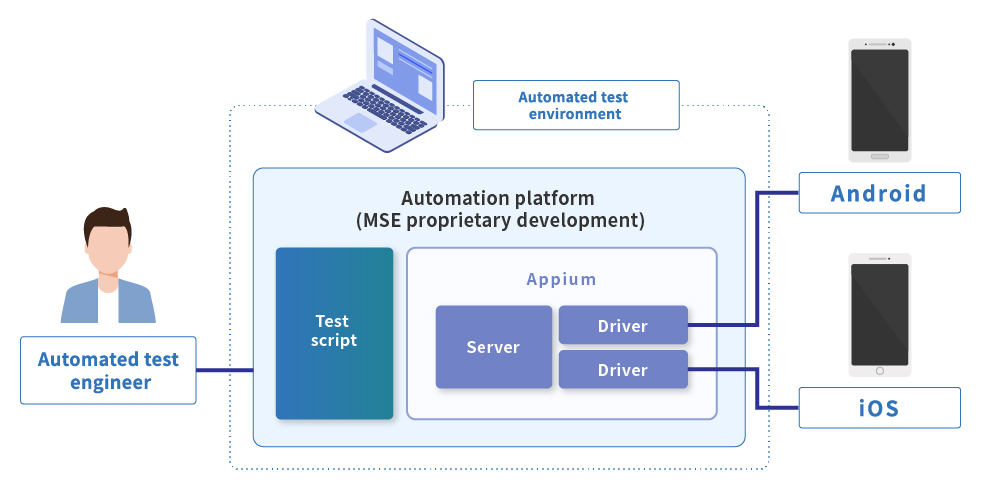Streamlining Automated Mobile Testing
While a wide range of service development for smartphones was actively conducted, the actual efficiency of tests emerged as an issue. We thus participated in test operations for communication carriers in 2013 and introduced automated tests in 2014, which was followed by the realization of automated tests for third-party verifications of Android/iOS. As we built a unique platform using OSS while studying automated processes, we were able to advance an annual implementation of about 70,000 tests. We are currently working to expand the range of automated tests through automation platform extensions and the visualization of test results with upgraded reporting functions.
01
Background
Efficiency promotion of tests became an urgent need while diverse services were created in succession
While the lineup of smartphones was expanding and diverse services were launched, issues such as the scale of verifications and increasing test periods emerged as challenges. Based on customer needs in addition to the above, it was decided to start the streamlining of tests, and we participated in test operations of software for mobiles in 2013. The key to this was the introduction of automated tests as a new means of “efficiency promotion.” Prior to this, as effective approaches to efficiency promotion, we focused on the utilization of offshore services and the development of testers, but to solve the challenge with the system, we started the initiatives to achieve this goal.
02
What we did
Proprietary automated test platform utilizing OSS realized from aspects such as cost efficiency and improvements/expansion of tools
In 2014, we established a team dedicated to automation and started the introduction of automated tests. Since then, we have tackled the expansion of automated test services utilizing paid tools until 2018. However, as paid tools are not cost-effective due to periodically incurring license fee costs and as the customization of such tools is limited, the expansion of automated tests temporarily reached a limit.
From 2019, we aimed at improving the cost efficiency of automation and realized a proprietary automated test platform utilizing OSS tools free from tool license fees. In addition, by taking advantage of the knowledge we cultivated in the utilization of various paid tools, we conducted a restructuring of processes associated with automated tests and supported the success of automated tests in total, not just being limited to “platform building.
03
Result
Achieved 35% automation ratio and 70,000 field records by optimizing platform and processes
Thanks to building a proprietary platform using OSS and the optimal processes for automation, the ratio of automated tests at our department steadily increased from 12% in FY2018 to 29% in FY2020 and reached as high as 35% in FY2021 with actual field records of 70,000 case a year.
In addition, we addressed the challenge of expanding unique functions in parallel and added some functions such as text recognition, comparison of specified regions of images and an output of result reports to those at the time of development. The service has now grown as one that can conduct diverse automated tests in a more efficient manner.




